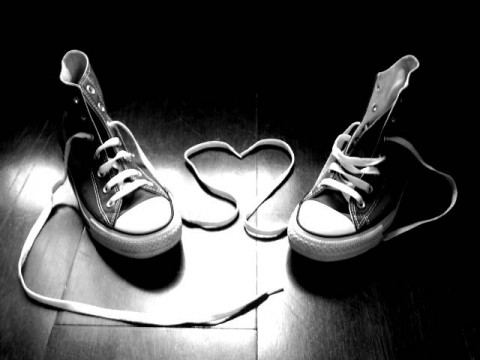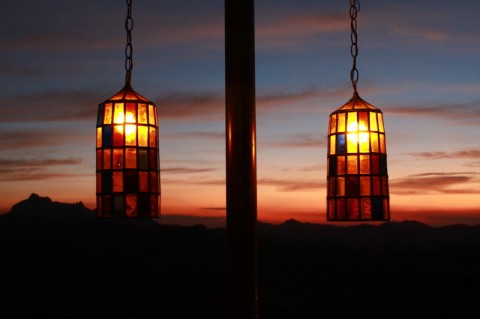April 16, 2020
This is the first post I ever wrote for IISC and dates back to this day 11 years ago. I have edited it only a little, in light of Václav Havel‘s passing, and it seems telling that it could have very easily been written for these COVID19 times, which are an extension of the patterns that have been at play for a while in our world.
Former (and first) President of the Czech Republic Václav Havel told a little story that may provide a little guidance in these times. In 1989, only a few months before he completed an incredible journey from prisoner to president of his country, Havel found himself in a dire situation. The dissident-poet-and-playwright-turned-politician, who had risked his life numerous times in the fight against communism, was walking with a friend in the countryside outside of Prague.
In the near total darkness, he suddenly fell into a hole, a deep pit surrounded by cement walls, which he realized was a sewer. Disoriented and covered in muck, Havel tried to move but this only made him sink more deeply. His friend above was joined by a number of people who gathered around the rim of the hole and tried frantically to rescue Havel. It was only after someone managed to find and lower a long ladder, nearly thirty minutes later, that Havel was saved from an untimely ending.
From this freak accident, Havel climbed not just to dry land, but to the presidency, a truly amazing turn of events. Having lived through a number of seemingly hopeless circumstances, Havel continued to be a profoundly hope-full man. He saw hope as a state of mind that most often does not reflect the state of the world. Hope for him emerged out of the muck of absurdity, cruelty, and suffering, and reached not for the solid ground of what is certain, but for what is meaningful, for what fundamentally makes sense. Hope, in his view, was not the same as optimism. It was not the belief that something would ultimately work out, but that it felt true in a very essential way, beyond what was relayed in headlines, opinion polls, and prognostications.
Obviously we are now faced with circumstances that demand some faith on all of our parts. With the uncertainty of a volatile economy and a swirl of other forces, there is plenty to be pessimistic about. And if we consider Havel’s story, the antidote is not to be optimistic in the sense of desperately looking for something that tells us everything will be alright or return to being as it was. Rather, the more powerful response comes from within and attaches itself to what most deeply motivates us, what tastes most like truth.
Peter Forbes of Knoll Farm once said that, “New culture is formed by people who are not afraid of being insecure.” (maybe because they realized that security is over-rated or not really a thing). That may be the promise of this slowdown, if we can quiet the chatter, avoid panic and attune ourselves to what is waiting to grow out of the cracks in the foundation. The question is, in following those roots and shoots, how far are we willing to go? And who will be out fellow travelers?
How can we go from emergency response to stewards of emergence?
January 17, 2014

 “We have to rid ourselves of the notion that innovation relies on the genius of an individual. We produce and innovate together only in networks.”
“We have to rid ourselves of the notion that innovation relies on the genius of an individual. We produce and innovate together only in networks.”
– Michael Hardt and Antonio Negri, Multitude: War and Democracy in the Age of Empire
This is our second post about the Social Justice Funders Network. Read the previous post here.
- How might women of color working in philanthropy support each other in nurturing our radical selves?
- How might funders advance racial justice and racial equity conversations in our philanthropic institutions in order to inform our practice?
- What is the appropriate role for foundations in support of movements and movement building?
- How might we be stronger allies to and supporters of youth organizing?
Read More
December 2, 2013

|Photo by Kyle Rush|http://www.flickr.com/photos/29096781@N02/3595829253/in/photolist-6tKyL6-6TjYr4-782X3v-782XV2-7q8PFS-7u5XGi-dx4sDx-fiYNSv-h9SFrn-h9Rr2o-h9RoPt-h9RpoK-h9Rsbh-8qR2uC-7NDpGo-ejtUcJ-dLRMB9-dS8otP-dSdXNY-dS8nop-dS8o6K-dLRNpb-aJ8zJv-ejLpgh-dKmixn-9Puxw4-8qMV6i-dLLep2-dktHij-dkEShK-9QAw9M-hUhofe-8zZSjL-7LGYPJ-bWQ7K6-8nREdc-8nUPrE-dsPBnf-dsPC1h-byFSTx-byFdTn-byFaJK-bkLgEL-bkLjDb-byF8Ug-byF6P8-bkLnAA-byFeqM-hE7ndt-dWmQMj-aE4heE|
Much has been written and said in the past month about President John F. Kennedy on the 50th anniversary of his assassination. I think the one important gift President Kennedy gave the country was a certain hopefulness about what people could do at their best and what government could do at its best. Listen (starting at 36:30) to an excerpt from President Kennedy’s inaugural address, read by Massachusetts Governor Deval Patrick. He enjoins the listeners to “Ask not what your country can do for you. Ask what you can do for your country.” In these days of Washington gridlock and partisan gamesmanship, it’s a message we can stand to hear afresh!
November 11, 2013

What we now know as Veterans Day began as Armistice Day or Remembrance Day, commemorating the end of “The War to End All Wars.” Sadly, World War I paved the way and was quickly followed by World War II. And countless lives have been lost in wars since. Sara Robinson’s description of the relationship between Remembrance Day and pacifism in Canada struck me as a powerful reminder on this Veteran’s Day. Here’s an excerpt from a longer post.
Read More
October 8, 2013

“Love” is now a category on the IISC Blog. How appropriate! Love is one of the three lenses that give shape to our work. And love is at the very heart of this project of social transformation. Love is path and goal. Love is how we get there and it is where we want to go.
Read More
August 26, 2013
The way Maya Wiley quickly and effectively names the problem that we have in how we deal with racism is truly remarkable. It takes her two minutes to get across a point that can seem quite complex. Her Center for Social Inclusion is my client and I couldn’t be prouder of the association. Read More
August 19, 2013

The following blog post is Part 3 of a series dedicated to Race and Social Transformation. We encourage you to share and comment!
Transforming racism is hard work! The complexity doesn’t automatically mean current efforts aren’t working. Still, many are searching for new ways to deepen their effectiveness. At IISC, we see focusing both on content (what can we do about racism) and process (how we engage with one another) as a powerful way forward. Consider a few examples that flow from our practice.
Read More
August 16, 2013

We worked with a national network of mostly white social change activists. We supported members of the network to increase the number of people of color at their annual gathering from 5% to 40% in a single year. Read More
August 11, 2013

The following blog post is Part 2 of a series dedicated to Race and Social Transformation. We encourage you to share and comment!
Race and racism continue to be defining features of U.S. society. As such, they show up in most of our projects, either explicitly or implicitly.
For example:
Read More
August 5, 2013

The following blog post is Part 1 of a series dedicated to Race and Social Transformation. Special thanks to Gibrán Rivera, Miriam Messinger, Curtis Ogden, Sara Oaklander, Mistinguette Smith and Maanav Thakore for their support in completing this series! We encourage you to share and comment!
In the U.S., the work of transforming racism is often stuck in an unproductive binary: either transform people or transform systems. Fortunately, more and more people recognize that we have do both and more. Read More
July 29, 2013

We facilitated a network focused on improving early childhood education and care. The initial focus was to build leadership capacity and facilitate strategy development with stakeholders across a state to design a more holistic statewide structure for decision-making related to early childhood. Read More











